Serving others by taking food to them when they cannot easily provide it for themselves is one of the most basic ways to show care and love. Some may think it unnecessary in our modern time of take-out and delivery and meals-on-wheels, but if you have ever been stranded at home for a week with two or three vomiting preschoolers while you are sick yourself, you know that a Dominoes pepperoni and sausage just is not what is called for.
A couple of months after I married and moved away from my hometown, a family in our congregation had a new baby. The day after Mommy and Baby came home from the hospital, I showed up at their house with dinner for that evening. The mom was shocked – she said several times, “I can’t believe you did this. Thank you so much! This is so helpful! Nobody has ever brought us a meal before.” I was taken aback – this was her third baby, as I remember. It was not that the people in the congregation were unkind or uncaring, but apparently nobody ever took food to anybody. The next time there was a need, I spoke to a few of the ladies and suggested we make a little calendar of meals for a week, one night for each of us. They were delighted with the idea. One older lady said, “Oh, I remember some of us used to do this for people years ago!” I wasn’t brave enough to ask why the practice stopped, but I imagine, like many good works, the spear-headers aged and got unable to do it anymore and everybody thought somebody else would take care of it and so nobody did, and probably those old ladies who had cooked countless meals for countless families ended up making do with cheese and crackers.
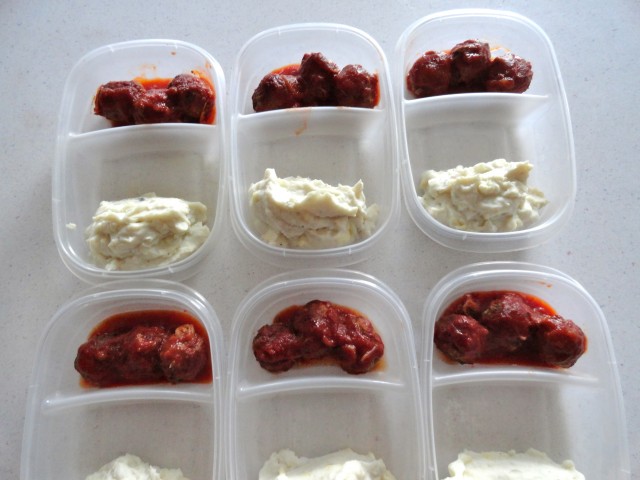
Making three items fit into two-compartment dishes; Barbecued Meatballs recipe is here.
If you are a human being, it is part of your job description to care for those who cannot care for themselves and that nearly always involves food, so it makes sense to get comfortable preparing and taking food to those who need it.
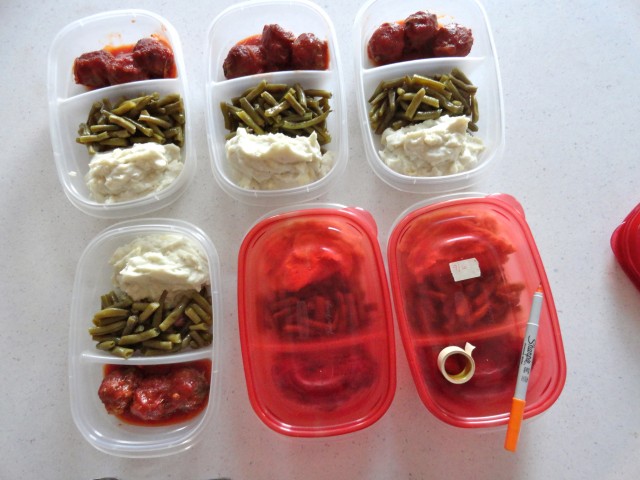
Putting the green beans, the least dense food, in the center will help microwave heating to be more successful.
To whom should I be taking food?
Basically, any time a family has an incapacitated homemaker, it will be a big help to the household to have food brought in:
- Pregnancy: Sickness/Bed-rest/Birth
- Illness/Injury
- Stress Overload: Bereavement, caring for ill family members, super-busy season
Two types of food to take:
- Stand-alone meal for a family, couple, or individual: For this type of meal, usually they are having what we are having. I simply make more of whatever I am cooking for our own dinner and take their part to them in the afternoon.
- “Buffet-type” food to be served along with other food – most often following a death when the family may have a lot of extra people and food may be eaten at odd times
Tips to make sure your food is really helpful and not something to be endured:
- Take into consideration dietary needs/preferences and re-heat-ability.
- Rule-of-thumb: sick and grieving people need food that is comforting rather than challenging, while others may enjoy food that is more fun or palate-expanding.
- Be scrupulously clean! People who are down and out in some way don’t need your family’s germs or pet hair to contend with. ‘Nuff said!
- Save their sanity! This is one time to be a little non-green. Keep a reasonable stash of obviously-do-not-need-to-be-returned containers on hand. (But you probably don’t need to keep every yogurt tub that comes into your life.) I buy some of those disposable foil pans when they are on sale for casseroles and cakes. If you do need to use regular serve-ware, make sure your name is clearly labeled so it can be returned.
- Make it easy to serve! Label each food item with the following: what it is, when it was made, how many it serves, if it can be frozen, cooking/reheating instructions, and, optionally, if it meets special dietary needs like gluten-free or low-sodium. I often write with a Sharpie right on the foil I will use to cover the dish. For example: Shepherd’s Pie; 2/13; serves 4; can be frozen; to bake from cold, thawed state: 350 degrees, uncovered, for 30-45 minutes or til heated through; GF
- Keep it simple! A casserole, a vegetable, and some bread. A meat, a starch, and a salad. Chili and cornbread. Just about everybody loves a pan of brownies or a batch of chocolate chip cookies if you (or the store) have time. If you have a nice fringe dish on hand like a jar of homemade applesauce or preserves, that might be just the appetite brightener someone needs.
- Keep it yummy! Remember: We eat with our eyes first, our noses second, and our mouths last. Try to make food that appeals to all three senses. When you take food to someone, there are two things that can work against their enjoyment of it: the “fear factor” of the unknown and the way it looks before it is warmed. You know it is good because it is one of your tried and true recipes, but to them it is unfamiliar. They may feel kind of the way many children are nervous about tasting new foods. Plus, if you have ever opened a container of cold chicken soup with bits of onion and carrot and noodles trapped in jiggly, jellied broth, you know what it means to be a little weirded out by something that will actually smell divine and look and taste delicious once it is hot. Those two things are true of most things you might take, but don’t add Strike Three by choosing something with even greater visual or olfactory challenges. Soup made with wild rice looks like congealed vomit when it is chilled. Ingredients like cooked cabbage or sauerkraut are real turn-offs to many people. What makes food more appealing? Top a casserole with cheese or breadcrumbs. Sprinkle things with a little minced fresh parsley. Dishes made with tomato products are usually good. For that ugly cold chicken soup, attach a card: “I’m not too appealing when I’m cold, but just wait until I’m heated up!”
- Sometimes people get nearly killed with kindness if there is no coordination, so consider a roster of food-bringers. Perhaps you can volunteer to put one together amongst your neighbors or co-workers or congregation.
I am a little afraid my list of tips might scare off a food-bringing novice, so know this: the most important thing is to just do it. Just show love. Just serve. You’ll get better with practice, but even your virgin attempt, done with care and concern, is so valuable to someone who needs it.

As absolutely heaven-on-a-plate as southern dumplings are, I would only take them to people who already know and love them. Admit it – they ain’t pretty! Recipe here
And sometimes we choose to ignore our own tips. My mom had an accident several weeks ago and I have been cooking most of their dinners since. Today is the second time I am taking a cabbage dish. It is not beautiful, and it will be especially ugly just out of the fridge, so I would avoid fixing this for someone else, but I know my folks’ tastes and we have a huge cabbage to use up and so cabbage it is.
Do you take food to other people? What is your favorite thing to fix?
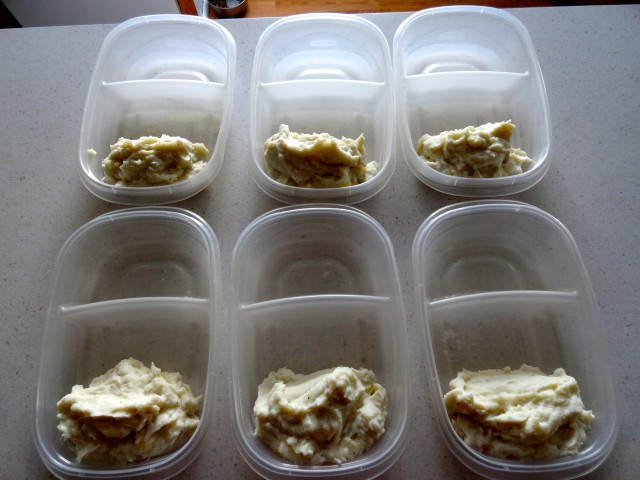

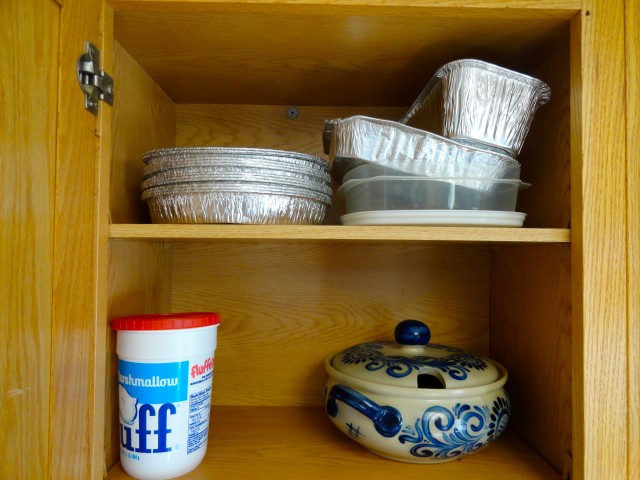
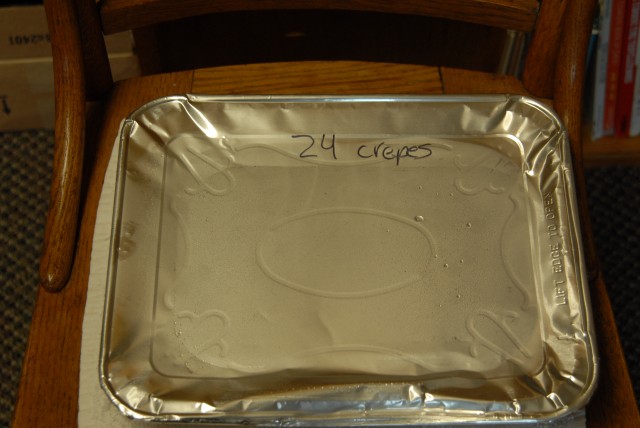
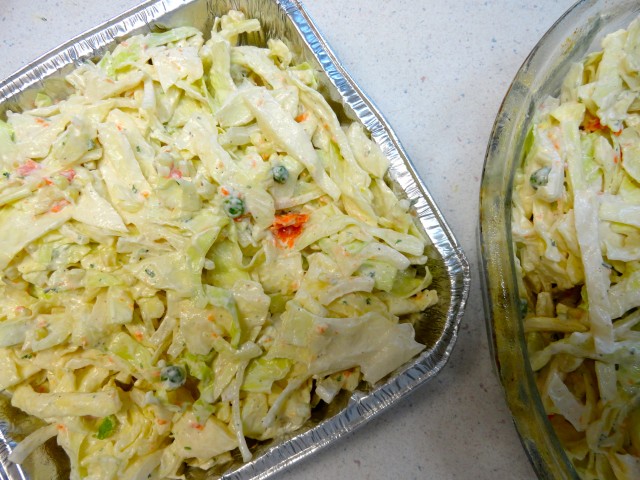

 Follow
Follow

13 Comments